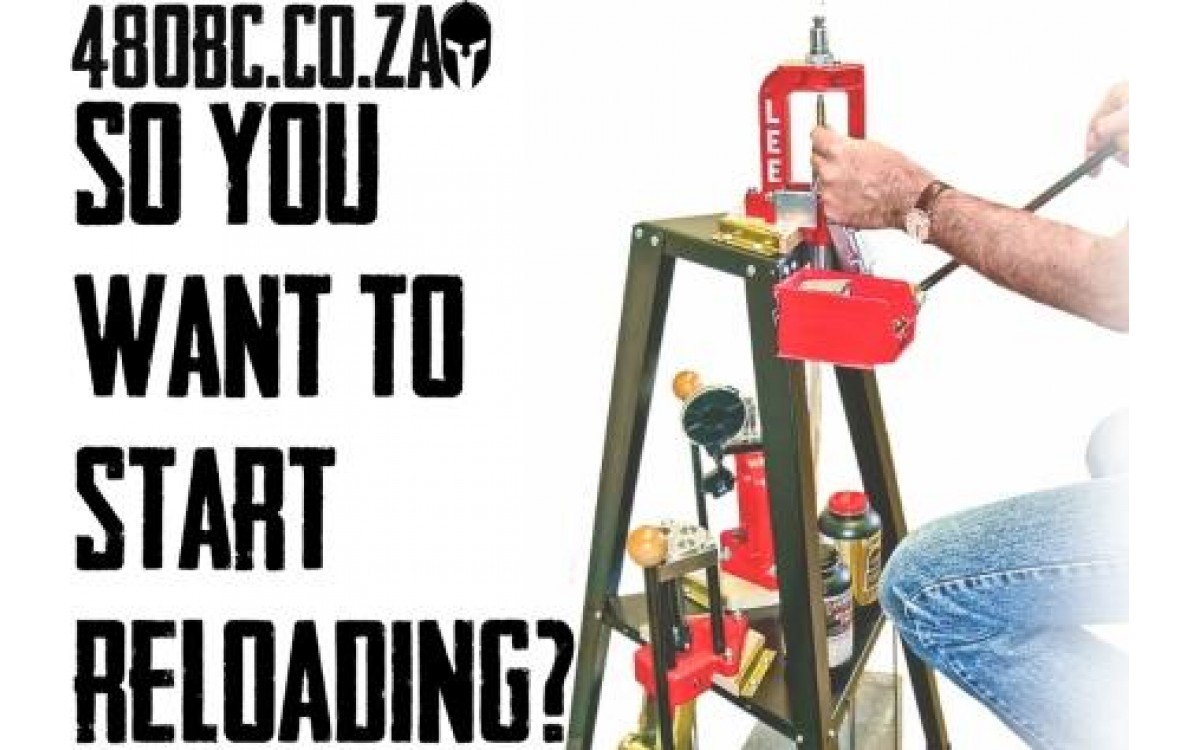Note:
We will be looking at pistol/revolver reloading in these blogs…you can apply the same basics to rifle reloading but you will need to do a bit more research…for example case trimming and which press to get.
Tools and space…
Ok, now you have way to clean your
cases and you have your press. You now need space to work and with this a good
solid bench to work on.
Make sure to give yourself enough
space to work on and try and future proof your bench…this reloading thing is
addictive, just now you will need space for a second press…
Your bench must be solid with almost
no flex in it. Secure it to a wall if possible.
If space is a problem, have a look at Lee’s reloading stand…we can source them but only on request as they are a pain to ship.
One of the most important tools you can have is a good reloading scale. You need to weigh your charges to confirm that your powder measure is accurate.
There are 2 options when it comes to
scales, either a Balance Beam Scale or an Electronic Scale.
Beam Scales are manual scales that
work with balancing a set weight. They are very accurate but can be tricky to
use and set up.
Electronic Scales are much easier to
use but can give false readings if you do not set them up right and use them
correctly. Batteries can also run down and lead to false readings.
If you are going to be loading a lot of rifle calibers for precision I suggest you get a good quality beam scale and a powder trickler…if you want to go electronic you need to look at something like Lyman’s Gen 6 Auto Dispensers.
But if you are only going to be reloading pistol and revolver ammo a good quality electronic scale will suffice. Just make sure it reads in Grains not Grams!
The next tool you must have is a Vernier Caliper, this tool is used to measure and you will need to measure your rounds to ensure that are in spec…Cartridge Overall Length etc. You do not have to buy a Vernier branded by a reloading manufacturer, the one you will find at Makro or Builders will do the same job.
Try to get a good quality Dial or
Digital Vernier, they are just easier to use.
Another tool to have is a Kinetic Bullet Puller…they look like a hammer and are made to safely remove bullets from cases. This is an important tool to check your crimp and to check for setback.
And believe me you will need one to fix errors while you are learning this reloading thing.
Next is a case gauge, you want to be sure that your reloaded ammo will function. Case Gauges are there to check this. Sure you can barrel drop but a Case Gauge is just easier, more accurate and safer.
You will also need reloading data from your powder supplier, just visit their website for the latest info. Most won't have your exact bullet but work with the closest one.
Another great tool is a Chronograph, you need to test your loads and a Chrony will show you your velocity and will show you possible pressure spikes. You can always find a friendly reloader with one to borrow or go with to use but you will end up buying one yourself. So rather add one to your budget from the start.
Buy once, cry once…
There are more tools that you will use as you go forth on this reloading journey but these are the most important.
Then I just want to add this as a closing thought on these blog’s.
Read as much as you can about
reloading, get a reloading manual like Lee’s Modern Reloading or the Lyman
book…the loads won’t help much but the info on how dies work and how bullets
perform is invaluable.
Try and find a reloader close to you,
go sit and watch the process and just learn.
I am always willing to help and chat about reloading so you can contact me if you have any questions.
But I hope that this series of blogs and the others here are a help to you.



